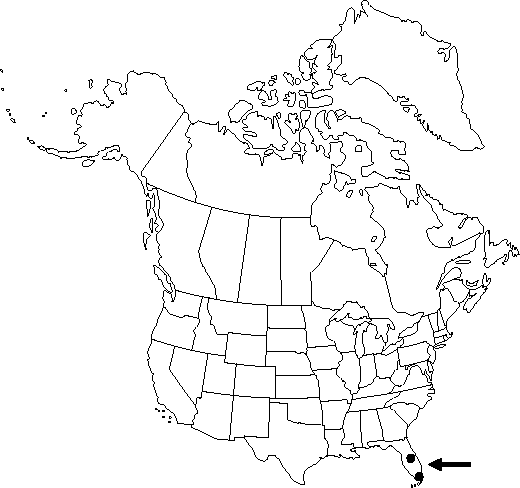Pilea trianthemoides
Coll. Bot., plate 4 and text on facing page. 1821.
Shrubs or subshrubs, 1.5-5 dm. Stems 10-30-branched, erect or diffusely ascending. Leaf blades with members of pair unequal, the larger obovate, 5-10 × 4-6 mm, the smaller nearly orbiculate to orbiculate-cordate, 2-5 mm wide, margins entire. Inflorescences crowded. Flowers ca. 0.3-0.5 mm across. Achenes uniformly light brown, slightly compressed, ovoid-cylindric, ca. 0.7 × 0.5 mm, pebbled.
Phenology: Flowering all year.
Habitat: Waste places, moist thickets, persisting after cultivation
Elevation: 0-20 m
Distribution

Introduced; Fla., West Indies.
Discussion
The group including Pilea microphylla and P. trianthemoides is in need of taxonomic study. Although in the United States these two species generally can be separated without difficulty, in the West Indies they appear to intergrade. In the West Indies, P. trianthemoides is sometimes treated as P. microphylla var. trianthemoides (Swartz) Grisebach.
The name Pilea serpyllifolia (Poiret) Weddell was misapplied to this taxon by J. K. Small.
Selected References
None.